RDAX was created to provide ad hoc monitoring and control for environmental management systems. At its core is a Phidgets Inc. single board computer (SBC3) with various interface modules. The advantages of using Phidgets for this project includes an out of the box framework in which all modules and sensors can be seamlessly interconnected and supported by an extensive events driven io library with sensor APIs, device enumeration and Web services.
Building the RDAX is as simple as printing/acquiring enclosure, mounting various interface boards, connect io boards to SBC3 with short USB cables, hook up power and wire up external connector.
In this particular configurationX the unit supports:
- 16 x Digital outputs with max 30v, 2 amp current sinking open collector outputs
- 16 x Digital inputs with +/- 30 V dc voltage range
- 8 x TTL level digital inputs
- 8 x Low current digital outputs
- 8 x 0-5 volt analog inputs
- 4 x -10 to +10 volt linear analog inputs
- 8 x 1.6 amp per channel servo motor control
Other Interfaces include:
- Wi-Fi (USB dongle on SBC3)
- Ethernet LAN
- USB 2.0 (6 in total, 4 used)
- 12 VDC power in (DC socket and screw type connector)
- 380 ma 5vc internal aux voltage
- 6-15vdc servo motor voltage supply connector
Initial cases for RDAX were designed using 3D extrusion printer technology. Various design changes between prototypes can be put into operation within several of days of inception.
External Connectors
External connector bus uses high duty cycle Pheonix style 20 amp per pin screw type quick connect terminators. IO lines are grouped and paired with adjacent auto resettable fused power and ground terminals. Various configurations can be applied to connector bus allowing for device purpose customization related to number and type of io requirements.
Prototyping and Applications
3D design methodology included with Phidgets framework allows the RDAX platform to be adapted to several applications including:
- Greenhouse monitoring and control
- Waste management systems
- Heating/cooling systems monitoring and control
- Field systems/area data logging
Early prototype of RDAX greenhouse environmental control system prior to incorporation of 3D print technology. Supports multiple temp humidity monitoring points, fan/heater control, vent dampers, door/window positions and lighting.
Greenhouse controller i/O diagram
Servo controlled, 3d printed vent actuators
Digital Output
- 16 open collector outputs can sink up to 2 amps per output.
- Device voltages can be from 0 to + 30 volts dc.
- Devices are activated by pulling the devices negative terminal to ground
- Can directly support relays, fans, small motors , solenoids, lamps, etc
Digital input
- 16 high impedance inputs
- -30 to +30 vdc input range
- Triggers high at 4.2 vdc
- 125 samples per second
- Accepts input from many sources
Analog Sensors
- 0- 5 vdc input range
- 10 bit ADC resolution
- Max input 1000 sample/s input rate
- Used for measuring voltage from sensors including temp, humidity, illumination, pressure, distance, power and PH
Temperature Probe Sensors (thermocouples)
- -10 to +10 volt input range in 1.5 uV linear increments
- 25 samples per second
- +/- 2c probe error max
- Specifically suited for industrial style temp probes capable of ranges in hundreds to thousands of degrees C.
Servo Motors
- 6-15 volt supply with 5vdc motor voltage
- 1.6 amp continuous per current motor (3amp surge)
- 83 ns min pulse width
- 2.7 ms max pulse width
- Current sensing feedback through api
- Runs small servo motors, actuators as well as other PWM devices
A few compatible sensors/devices
Sensor Formulas
Formulas for converting analog sensor voltage
Analog input (0-5vdc)
- Temp in Celsius = SensorValue * 0.22222 - 61.11
- Relative Humidity = SensorValue * 0.1906 - 40.2
- Lumens = calM * SensorValue + calB (calB and calM are calibration settings on each sensor)
Thermocouple
- Voltage from probe is a linier representation of temperature in 1.5 uV increments
Future addons
- Multi-board mounting studs for RaspBerry Pi and other mocrocontollers
- RaspBerry Pi version
- Wiring PCB's to mount external connectors to case risers
- Battery powered using induction charging
Phidgets Inc. provides an extensive list of application notes and source code samples that can be used to develop apps for SBC and connected modules used in RDAX. In addition, FutureHouse provides a MIA framework (Multi Interface Accumulator) for supporting grid based connectivity to all Phidgets, modules, sensors and controllers. Sample source code for attaching and reading sensor data has been provided. Once ready, a full version of framework application and sample source code will be made available here.
MIA Screenshot
Data logging
All inputs and outputs can be added to graphing table for at a glance correlation between changing environmental conditions and io states. Example graph showing remote greenhouse conditions and system responses at sundown.
MIA application details
- Unlimited number of devices and senors (bandwidth constrained)
- Interface board auto connect - reconnect
- Auto GPIO physical pin type identification
- XML config file driven parameters
- Real time monitor and control of devices from data grid
- Event driven data cycles (reduces bandwidth)
- Data file logging
- Event messaging
- Charting
- Sensor calibration settings
- Additional data label tagging
- Developed in .net c# managed code


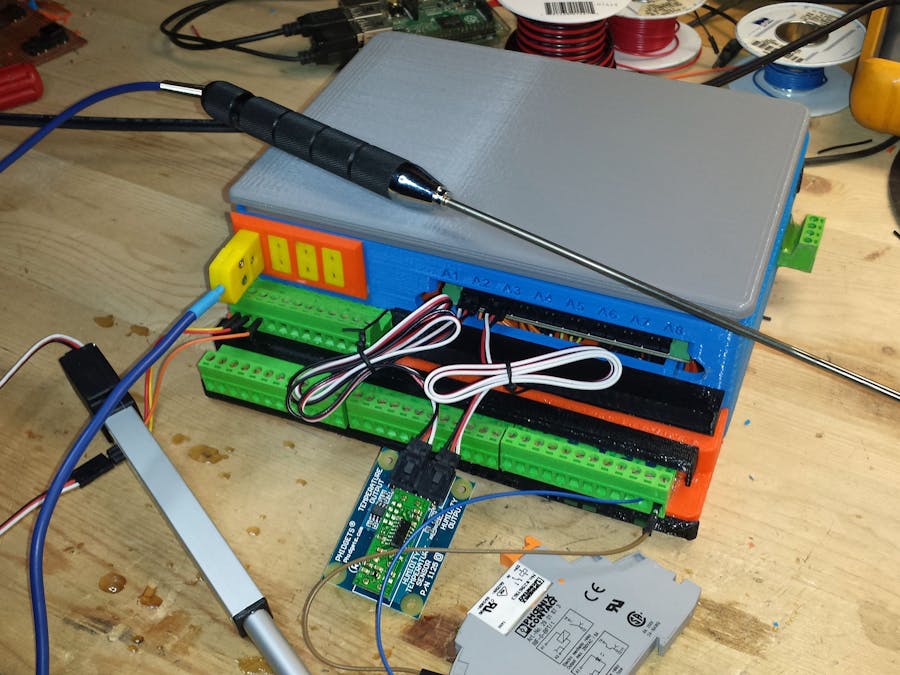

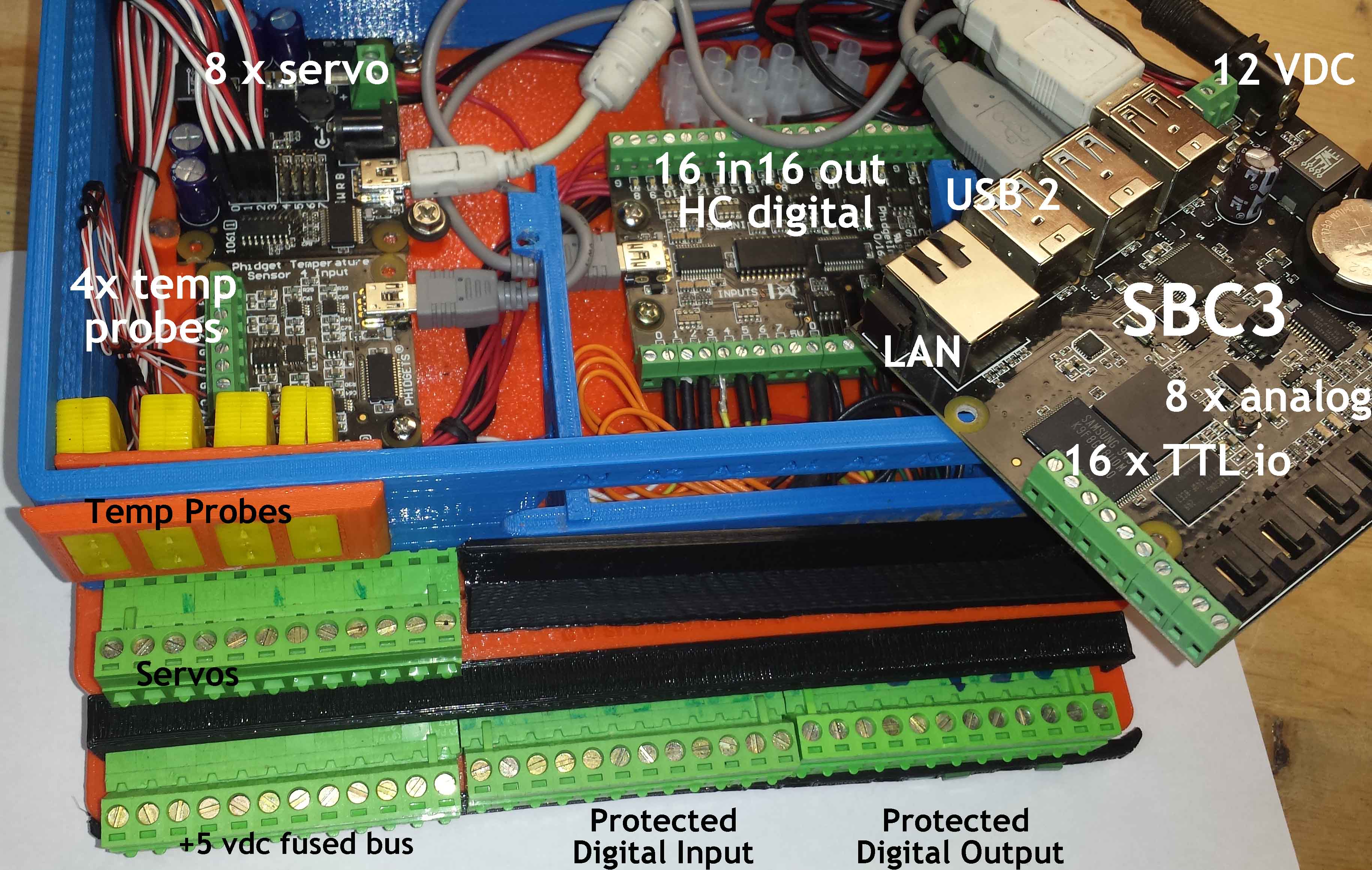
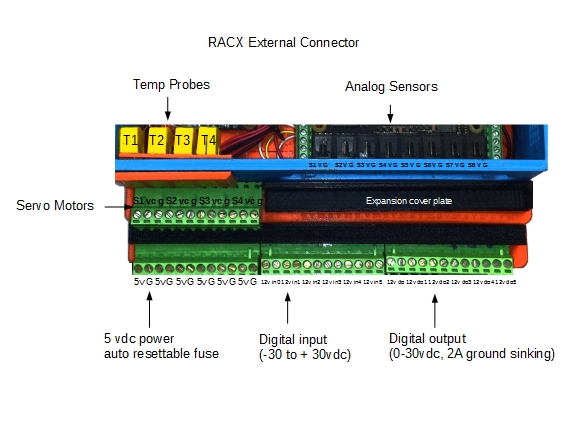
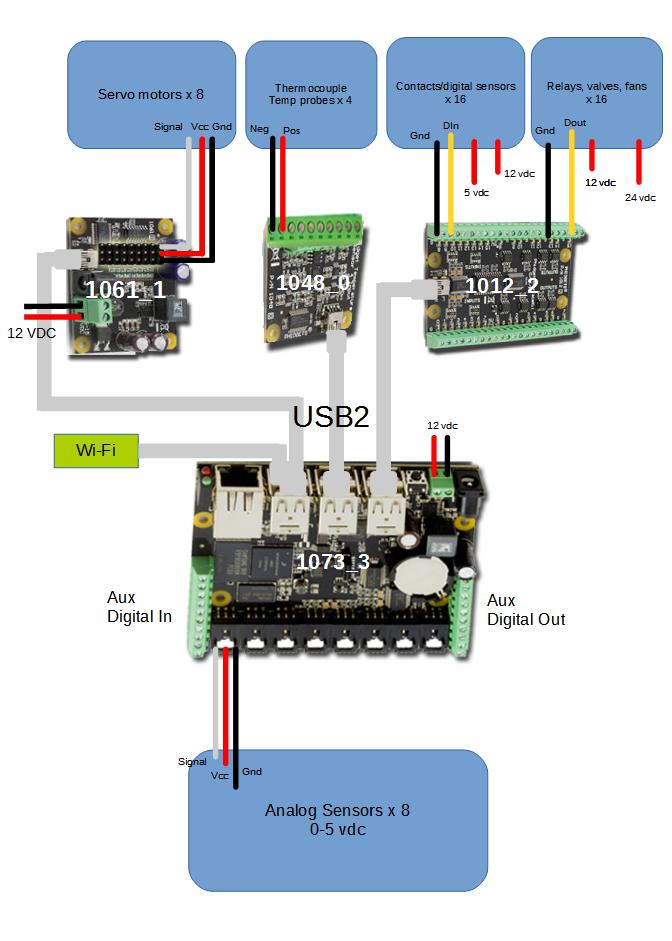
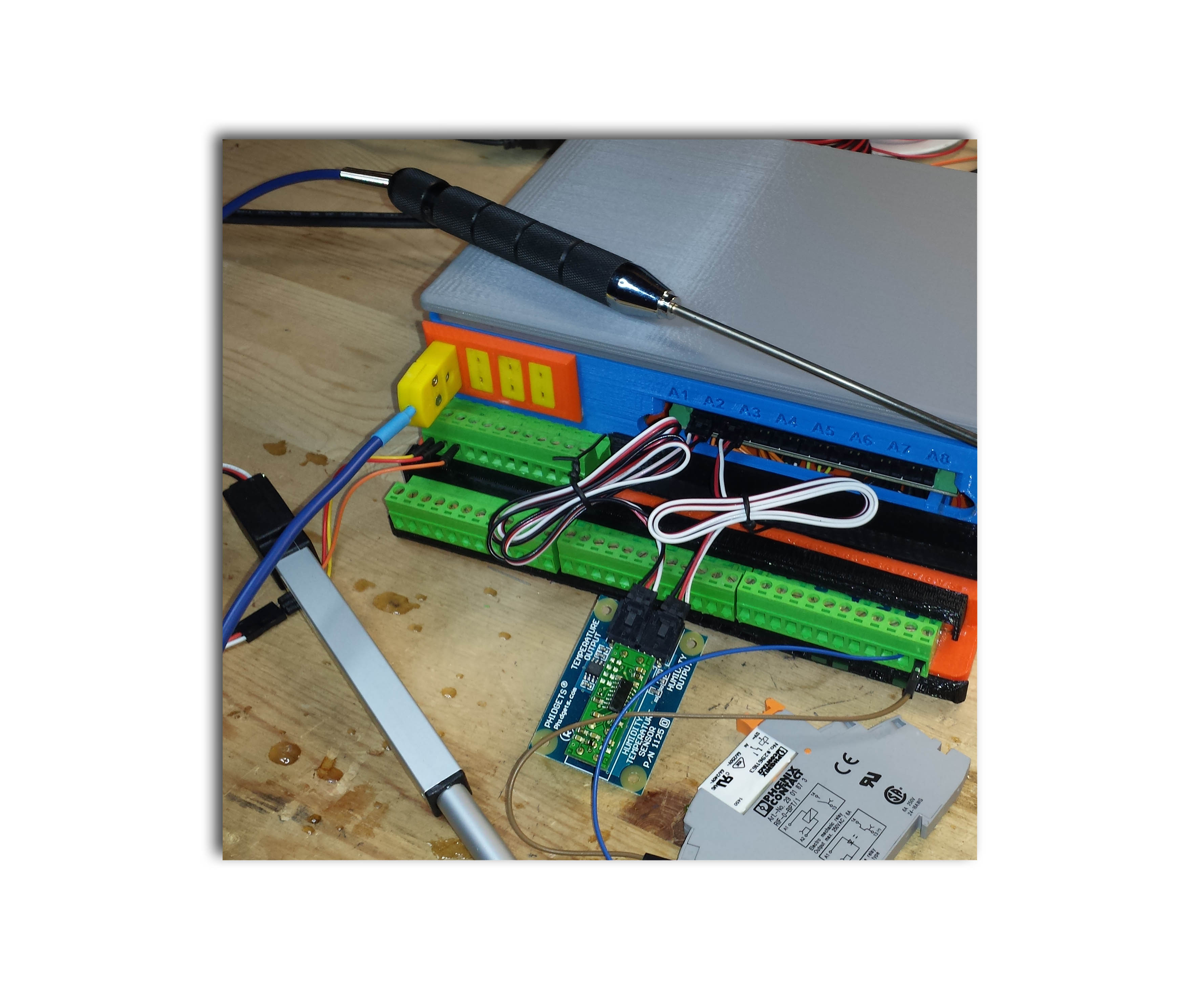

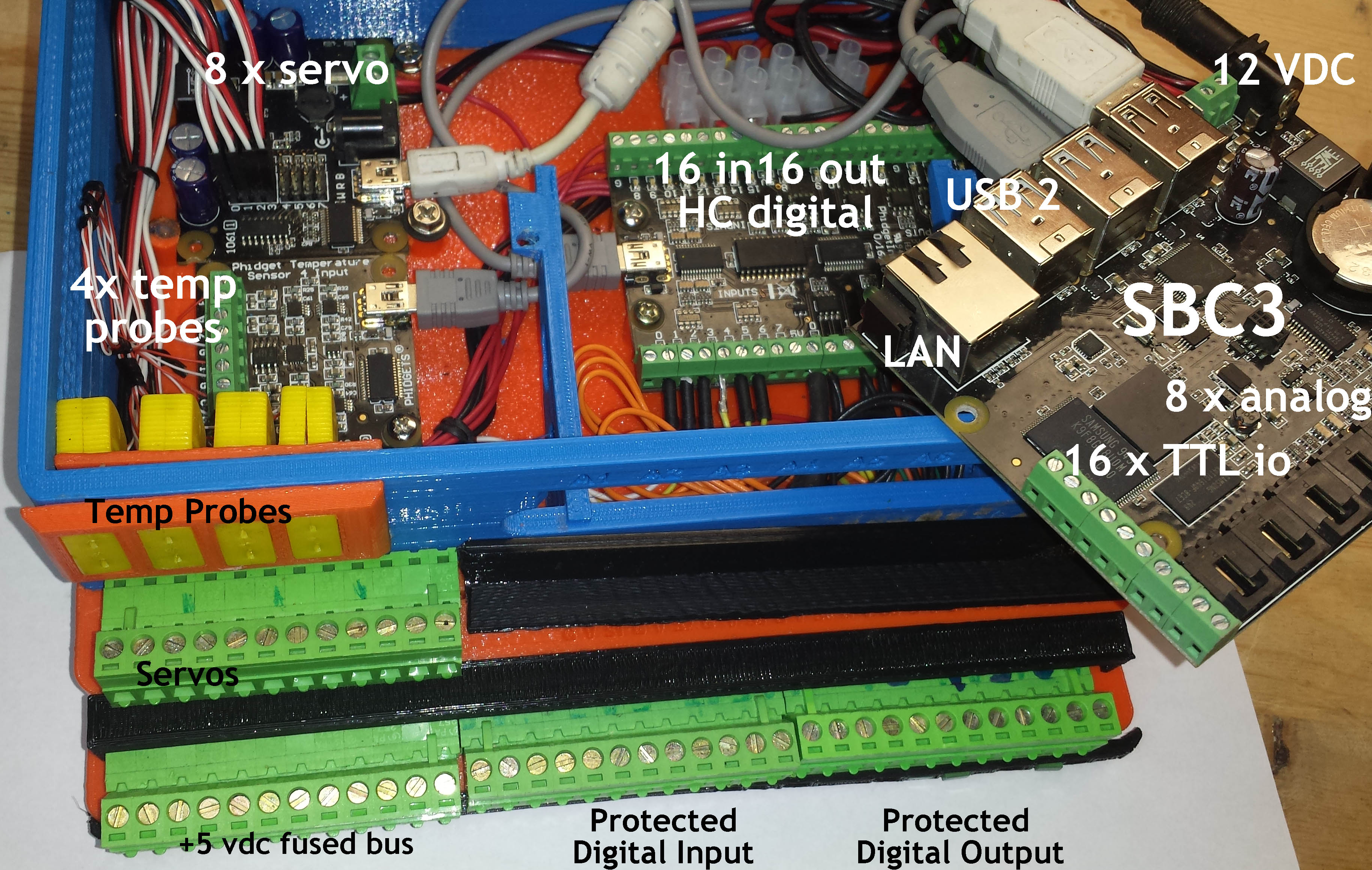

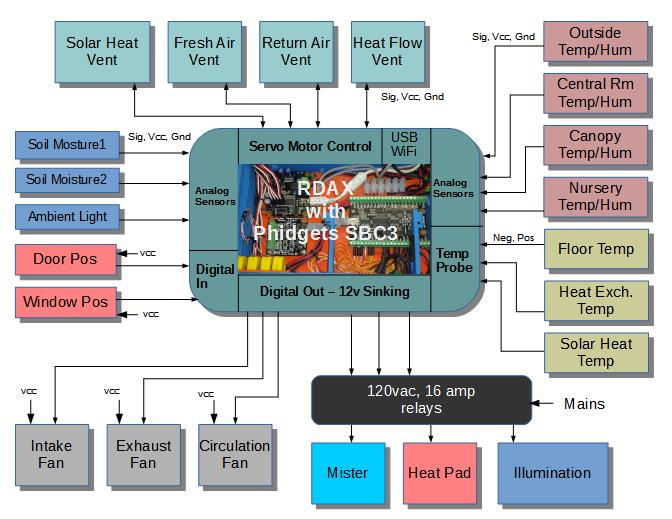

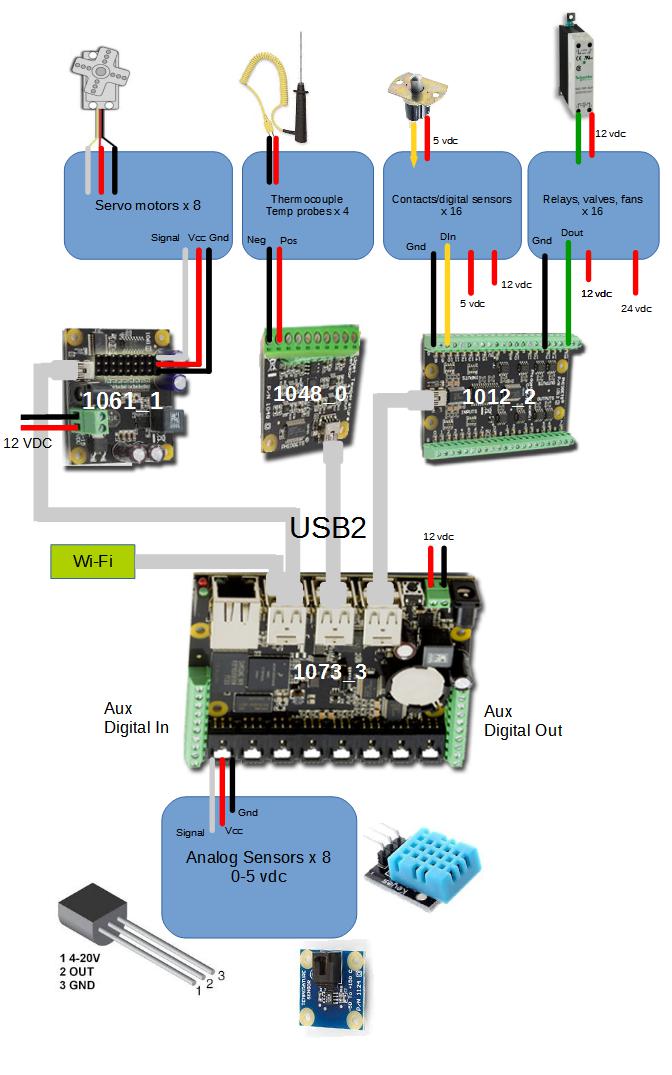


Comments
Please log in or sign up to comment.